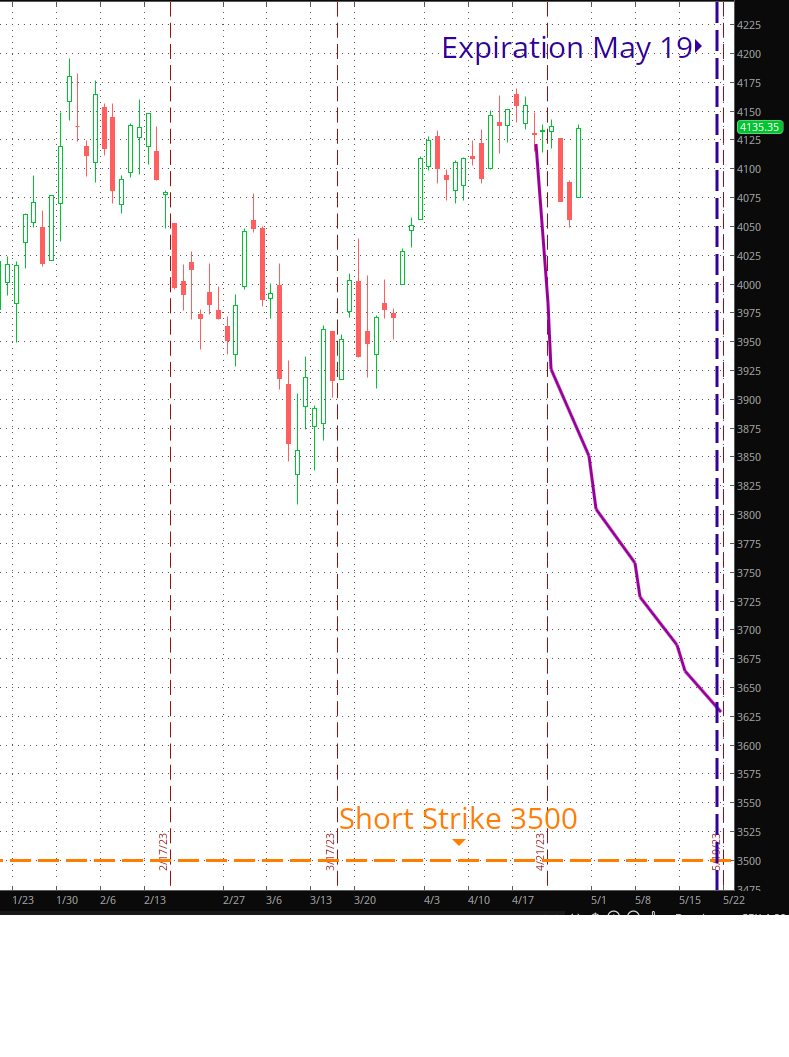
HiPOS Weekly Update: Moving in The Right Direction
By Derek Moore
HiPOS Conservative Trade Update
HiPOS is a systematic approach to selling volatility to generate monthly income.
It is not trying to pick the direction of markets. Nor is it trying to predict fundamental things like earnings. This week some of the bigger names reported earnings that were not as bad as expected.
Hey, we’ll take it as the markets moved higher in response.
Given that we are currently short an S&P 500 Index (SPX) put spread, this was welcome news.
While there are still 16 trading days left until the expiration day on May 19th, you’ll notice that the early move in the underlying SPX helped open some space between price and the purple curved defensive posture line shown in the graph above. We’ve discussed in the past how early on you want markets to trade flat to up (in the case of a short put spread) to give time decay an opportunity to work.
With markets moving higher the distance remains a healthy 14.5% plus between the market and the short 3500 strike.
What Are You Rooting For?
Each day that passes towards expiration allows a little more time decay in the value of the position.
So, you want time to tick by. Then, the market can move higher or stay flat which would work just fine. Because the distance above the short strike is high, it’s also fine if markets move lower a bit. You just don’t want it to make a big move lower too fast.
We always say HiPOS can be an interesting sleeve in the portfolio that doesn’t need the market to move higher to potentially realize profits.
Without becoming too technical, when markets have big events like earnings, economic news, or Fed announcements, there tends to be more volatility embedded in the price of options.
After this week and next we are through a major part of earnings season as well as the inflation and Fed meeting. The options market prices that into the premiums. Once those are passed one might expect some of that extra volatility premium to come out of the positions.
Of course if markets were to turn lower materially, we could see an increase.
We’ll leave it there for now but plan on another installment next week.
